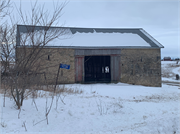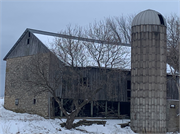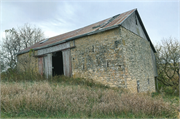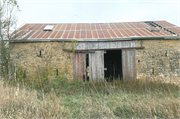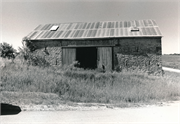| Additional Information: | A 'site file' exists for this property. It contains additional information such as correspondence, newspaper clippings, or historical information. It is a public record and may be viewed in person at the Wisconsin Historical Society, State Historic Preservation Office.
Wisconsin, famous today as "America's Dairyland," was once "The Nation's Breadbasket." Many Wisconsin families, including the Weltys, found prosperity in the mid-nineteenth century by growing wheat. Migrating from their native Pennsylvania to Wisconsin in 1848, they brought with them ten unmarried children and one married son and his wife. They established a wheat farm and built this threshing barn, a Grundscheier (ground barn).
Though similar to an English three-bay barn, its design is likely Germanic. Henry Welty, the second-oldest son and a carpenter by trade, probably raised the timbers that frame the side-gabled barn, but we do not know who constructed the walls of rock-faced stone, leaving loop-like slits for ventilation in the German fashion. The rear walls are made of vertical boards. To thresh wheat, the Weltys either flailed the grain on the barn floor or had their livestock trample it. Then they opened the large doors in the front and rear walls (the sliding doors you see today probably replaced hinged doors, since sliding doors were uncommon before the 1880s) to allow a cross-breeze to blow through the structure. When the threshed wheat was tossed into the air, the breeze carried the chaff away and the seeds fell to the floor.
By the late 1860s, soil depletion and competition from western states combined to devastate Wisconsin wheat farming. In 1870, the Weltys, like many of the state's wheat growers, sold their farm. As dairying spread across southern and western Wisconsin, most threshing barns were converted into basement barns, with cattle quarters downstairs. The Welty Barn is one of the few threshing barns to survive unchanged.
See also #243044, 243045 |
|---|

